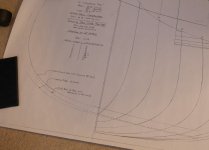OK, i have decided to start my first build over the coming winter. I have read Canoe craft at least twice and followed the numerous builds here over the last few years. Thanks to Jim and Bens recent build, me and my boys will be tackling the Wee Lassie 2. This provides our clan with an additional canoe for family outings, lets us play with a small solo, and should be good on the small rivers and creeks in the area. My oldest son also wnat to build one for 4-H, so this hopefully will be a good pratice to start finding out what works best for us.
So, now for a few questions:
1- What is the best, yet reasonable bead and cove bit?
2- Where is the most ecominical place to get sanding disk?
3- Best web site for cloth and epoxy
Looking forward to getting started in the next few weeks.
Bryan
So, now for a few questions:
1- What is the best, yet reasonable bead and cove bit?
2- Where is the most ecominical place to get sanding disk?
3- Best web site for cloth and epoxy
Looking forward to getting started in the next few weeks.
Bryan

